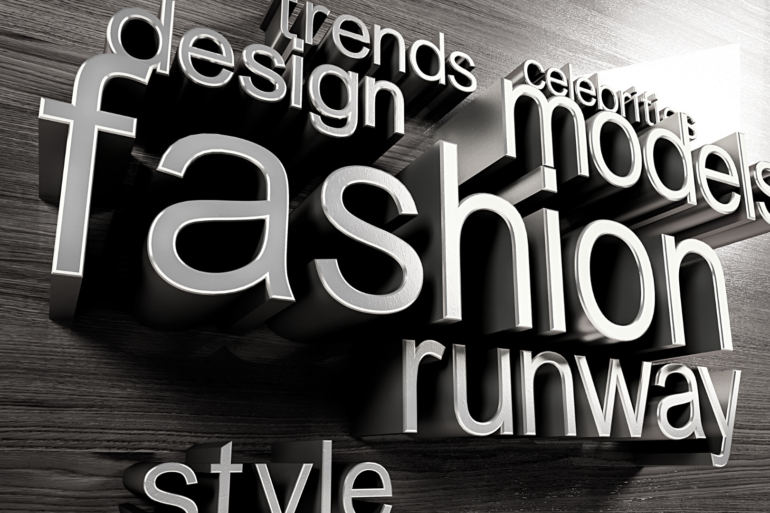
The Meaning of The Most Used Words in Fashion
Hi fashion lovers! For those of you who are beginners in the fashion world, you must be feel very curious and excited at the same time. Learning about the fashion industry is really fun, especially if you’re really into it! If you not go to fashion school, there’s a lot you have to learn on your own. One of them is a term used in the fashion industry. Knowing the meanings of the most commonly used words in the industry will help you to better understand the world of fashion and communicate better with fashion buyers, manufacturers and industry partners.
Learning and understanding the correct words for the following fashion concepts will certainly take some practice. But the more you use it, the faster you’ll get the hang of it and become a more knowledgeable fashion professional. We recommend writing it down on your board on the wall.
Fashion Design Terminology You Will Hear
Firstly, the fact that many of the words in fashion are of French origin because France initiated many new styles and trends over several centuries. Below are some of the fashion terminology, en français, that you will hear and use as you design:
- Pret-A-Porter: This term is French for ready-made. This means that the design is made using a standard sizing chart and the product is ready to be used by consumers.
- Haute Couture: Haute is French for High. Couture is French for tailoring. Sometimes you will hear people say high fashion, or just couture. Haute Couture is the highest level of fashion. This is where the highest product quality and craftsmanship occurs in the industry, resulting in the most expensive designs.
- Couturier: A couturier is the person or company that designs Haute Couture.
- Avant Garde: This means front guard. In fashion, this term means to be at the forefront of fashion. Avant Garde sets new fashion trends, techniques and styles for everyone beyond the boundaries of fashion.
- Atelier: Atelier is a studio or workshop used by a designer where their work is done.
France’s long history in fashion has made the above words part of the industry.
However, you will also use other non-French fashion terminology such as:
- Silhouette: Silhouette is the overall line and shape of the garment. If you’re working on historic designs for theater, costume, or film, silhouettes are critical for accuracy.
- Body Shapes: There are six body shapes: Teardrop, Inverted Triangle, Hourglass, Column, Oval, and Figure Eight.
- Classic: Classic is a style that lasts through time, aka timeless.
- Mode Cycle: A mode cycle is the lifetime of a particular mode. There are five stages: Introduction, Ascension, Peak, Decline, and Obsolescence. It’s the same as the product life cycle, but in fashion.
- In Vogue: This means that if something is truly in Vogue, then it is fashionable.
- Textile: Textile is different from the word cloth in that textile is a woven material.
- Look Book: A Look Book is a collection of designer clothing displayed in the form of photos. These are often featured on designer websites to showcase their work.
Fashion Terminology With Fashion Manufacturer
Secondly, there is also a special fashion terminology associated with working with manufacturers. This includes many abbreviations:
- CAD: This stands for Computer-Aided Designer. This means you use Adobe Illustrator, or a similar tool, to create your designs. The manufacturer may tell you at some point that they are making suggestions about your CAD.
- CAM: This stands for Computer-Aided Manufacturing. This is the software manufacturer used to create your designs. The CAD is placed into the CAM system for production.
- Grading: Grading takes a sample size of a pattern and increases, or decreases, the size of the pattern. If the sample pattern size is M for men, and you also need a pattern in the letters S and L, the process of creating a pattern with the other size is called grading.
- CMT: This stands for Cut, Make, and Trim.
- Flat: Flat is your design that is drawn flat with no pattern or color and shows all the stitches and arrows of each look.
- PDS: This stands for Pattern Design System.
- PO: This stands for Purchase Order.
- DTM: This stands for Dyed to Match.
Fashion Terminology in Sales
Thirdly, if you love fashion and want to develop it, of course you have to sell fashion products. In owning the fashion brand and you handle all orders and shipping yourself, you also need certain fashion terms to communicate with distribution services and sales partners:
- BOM: This stands for Bill Of Materials.
- POS: This stands for Point Of Sale. It is the system in which consumer transactions take place. There is also a Cloud POS system.
- DC: This stands for Distribution Center.
- Brick and Click: Brick and Click is when you have a brick and mortar store and website.
- Fashion House: Fashion house is where clothes are designed, made and sold. You’ll also hear terms like Dyehouse, this is where the fabric is dyed. Anything that follows “house” is usually the specialty of that house.
- Last but not the least, Colorway: This is a great way of saying color choices for the same product. For example, if you’re designing sandals, the colorway will offer them in red, pink, and white.
Finally, by learning new vocabulary in fashion, you will be able to communicate better with manufacturers and designers. So you have a better understanding of the work you do and why certain processes occur in certain ways. As you work in the fashion industry, you will pick up more terminology along the way, this you will understand by learning to come with experience.
